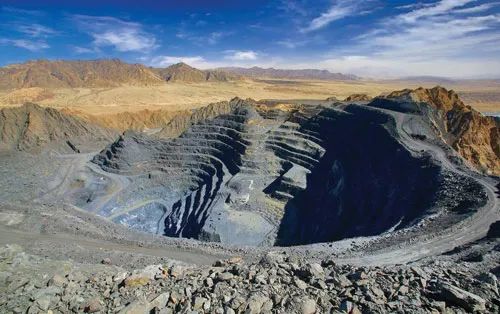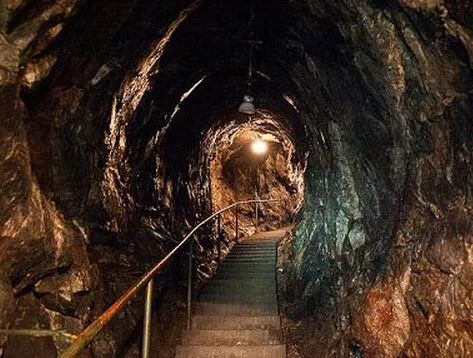Subscribe to our newsletter and always be the first to hear about what is happening.
Introduction of mining types and methods
May 20, 2023Introduction of mining types and methods
Mine Mining
Mining refers to the use of artificial or mechanical mining of valuable natural mineral resources. According to the different depths of deposits and the requirements of technical and economic rationality, mining is divided into two ways: open-pit mining and underground mining. The part close to the surface and shallowly buried is mined by open-pit mining, and the deep part is mined underground.
For an ore body, whether to use open pit mining or underground mining depends on the state of the ore body's deposit. If open pit mining is used, how deep should be used is reasonable, there is a depth boundary problem, the determination of the depth boundary mainly depends on the economic efficiency. In general, the realm stripping for example is less than or equal to the economic and reasonable stripping ratio, open pit mining can be used, otherwise, underground mining methods are used.

(A) open-pit mining
Open-pit mining is a mining method that uses mining equipment to strip rocks and extract useful minerals in an open-air condition, in an open-air or depressed open-air manner on a hillside, stage by stage. Compared with underground mining, open pit mining has many advantages, such as fast construction, high labor productivity, low cost, good labor conditions, safe working, high ore recovery rate, low depletion loss, etc. Especially with the development of large and efficient open pit mining and transportation equipment, open pit mining will be more widely used. At present, most of the ferrous metallurgy mines in China adopt open-pit mining.
The whole process of constructing an open pit mine generally includes: the construction of surface facilities in the mine area; the dewatering and drainage prevention of the deposit; the basic construction of the open pit and a series of preparatory work for putting into production.
Open pit infrastructure is mainly to dig the entry ditch, exit ditch and open section ditch, lay the transportation line, build the drainage field, strip the rock and build the drainage and power supply facilities.
The entry and exit trenches are to establish inclined transport roads from the ground to the working levels and between the working levels. Open section trenches are the horizontal trenches dug at each level to open up the mining workings, which are the initial workings of the opening phase.
Trenching, stripping and mining are three important parts of the open pit production process. The speed of decline of open pit mine and the length of preparation time for new levels are mainly determined by the trenching speed. In order to ensure the continuous and normal production of the open pit mine, a certain relationship must be maintained between trenching, stripping and mining in terms of space and time. Follow the principle of "mining and stripping, stripping first" to organize production.
Open pit production process, whether stripping or recovery of ore, the process generally go through perforation, blasting, loading and transportation. At present, the equipment used in China's ferrous metallurgy mines, perforation is mainly tooth wheel drill and perforation drill, impact drill has been eliminated. Most of the loading equipment use 3 ~ 4.6 m 3 electric shovel, 6 m 3 above the electric shovel also began to use. Most of the transport equipment use more than 20 tons of heavy vehicles and 80-150 tons of motor vehicles, 100 tons of electric wheel vehicles are also used in some mega mines.
(ii) Underground mining
When the deposit is buried very deep below the surface and the stripping factor is too high by open-pit mining, underground mining is used when it is considered reasonable to use underground mining after technical and economic comparison.
As the ore body is buried deep, in order to extract the ore, it is necessary to excavate tunnels leading from the surface to the ore body, such as vertical shafts, inclined shafts, ramp roads, flat tunnels, etc. The focus of underground mining capital construction is to dig these shafts and lane works.
Underground mining mainly includes three steps: exploration, mining and cutting (quarrying and cutting work) and recovery. Open up is in order to reach the ore body from the surface and open up the shaft, inclined shaft, ramp road, flat road and other shaft excavation project. Quarrying is the preparation work for ore recovery on the basis of pioneering works, including mining preparation lanes such as flat lanes, cross lanes and skylines in the digging stage. Cutting is the shaft work that must be completed before the recovery operation according to the mining method on the basis of the development and quasi-engineering, such as cutting the patio, cutting the flat lane, pulling the bottom lane, cutting the riffle, releasing the ore hopper, rock drilling chamber, etc. The backhoe is a mining operation in the quarry that includes rock cutting and crumbling of ore, transporting and moving ore and supporting the quarry. These three steps are carried out in sequence, and after the mine is in operation, the various shafts and tunnels continue to be excavated in order to maintain normal production. Such as the extension of the development of the roadway, the excavation of various prospecting
mining, back mining roadway, etc.. In time, we must follow the production law of "development ahead of mining, mining ahead of recovery, to ensure that the amount of production at all levels of preparation to reach a reasonable retention period". This is through the long-term production practice summed up more in line with the scientific laws of mine production practice.
When mining underground deposits, the upper stage is generally mined first, followed by the lower stage. In the stage, the ore block is divided into blocks along the direction of the deposit (the height of the block is generally 40-60 meters, while in foreign countries it is generally 60-120 meters, and can even reach 200 meters), and the block is generally used as the basic unit or the block is subdivided into ore houses and pillars for recovery.

There are many underground mining methods, mainly divided into the following three categories:
(1) Natural support mining method. The mining area is divided into ore houses and ore pillars. When mining back to the room, the resulting void area is supported by the pillar, therefore, the basic condition for using this type of mining method is that both the ore and the surrounding rock need to be stable.
(2) Artificial support mining method. In the mining area, as the recovery workings advance, artificial support methods are used to maintain the mining void and form the workings.
(3) Crumbling mining method. It is a method to control the management of ground pressure by filling the mining area with the crumbling surrounding rock as the ore falls. As the upper and lower plate rock crumbling will cause the collapse of the surface, so the surface allows crumbling is a necessary prerequisite for the use of this type of mining method.
Underground mining, whether it is pioneering, quantification or recovery, generally have to go through rock drilling, blasting, ventilation, loading, support and transportation and lifting processes.
At present, China's key underground mining equipment, rock drilling is mainly used rock drills, rock drills and deep hole drilling rigs used in the quarry. Loading is mainly used loaders, scrapers, electric rakes, etc.. Flat tunnel transportation and lifting generally use motor trucks to haul columns of ore cars to shafts, inclined shafts, hoisting shafts and sites, and then use cages to lift the ore cars to the ground, and large underground mines are unloading the ore cars into bins and then loading them into skips to lift them to the ground.